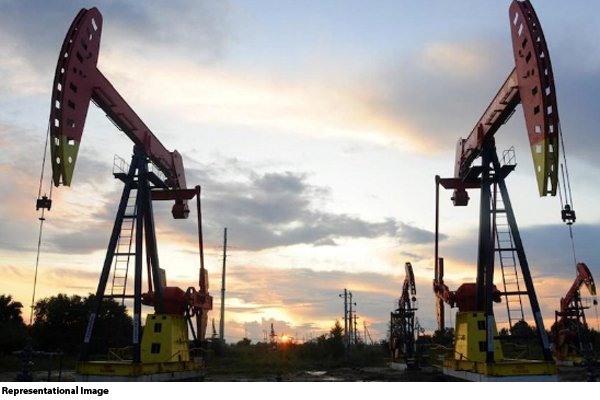With the current struggle, the prices of edible oils, wheat, palm oil, barley etc are expected to rise further. This is because Ukraine and Russia account for a large part of the world’s commodity trade.

New Delhi: The ongoing Ukraine-Russia conflict has pushed prices across the world to record highs amid concerns of supply disruptions. Crude rose to $105 a barrel, while palm oil and wheat prices hit record highs. This is likely to result in supply chain disruptions in India leading to further inflation, especially for the FMCG industry.
India has seen unprecedented inflation over the past year, with commodity prices reaching multi-year highs. From HUL to Britannia, ITC and Nestle, most FMCG companies have flagged inflation as a concern during their October-December (Q3) results.
With the current struggle, the prices of edible oils, wheat, palm oil, barley etc are expected to rise further. This is because Ukraine and Russia account for a large part of the world’s commodity trade.
Sunflower oil is likely to be affected the most as India imports 70% from Ukraine, 20% from Russia (remaining 10% from Argentina), about 2.5 million tonnes annually. Adani Wilmar, the maker of Fortune Oil, gets 20 per cent of its volume from sunflower oil and is almost entirely dependent on imports from these regions. Its JV partner Wilmar, which has plants in Ukraine, has suspended operations amid the current crisis.
The company has stockpiled inventory for the next 60 days, but said that if the struggle continues, supplies could be disrupted, which could push up sunflower oil prices. Adani Wilmar’s stock rose 10 per cent on Friday amid prospects of a rise in sunflower oil prices.
Marico has expressed concern over rising raw material prices. “The evolving geopolitical scenario may further push up the prices of crude oil and other commodities which will have a cascading effect on raw materials and packing materials. “Organizations will have to gear up to absorb some of the cost and put some pressure on consumers through aggressive optimization initiatives,” said Saugat Gupta, MD and CEO, Marico.
Ukraine and Russia also form a large part of the global wheat and maize trade. Ukraine reportedly accounts for a quarter of global wheat trade and a fifth of corn sales. Russia and Ukraine together account for 20% of the world’s corn trade and 30 percent of the world’s wheat exports. Corn prices hit a 33-week high, while wheat prices hit a nine-year high. Any impact on crop production and global supply will drive prices up around the world.
India is self-sufficient in wheat. However, an increase in wheat prices globally will also lead to a rise in Indian prices. This is likely to impact the prices of flour, bread, biscuits and other food products that use wheat as raw material amid the possibility of supply disruptions.
Parle, which has hiked prices by 6-7 per cent, has already said that the company has inventory cover for the next 2-3 months, but there will be demand for wheat from overseas markets as supplies from Russia and Ukraine will be affected. , which in turn will increase wheat flour prices or wheat prices in India too.
The conflict caused palm oil prices to hit record highs. Malaysian palm oil futures rose more than 8 per cent on Thursday to hit a record high, also their highest daily increase in six months.
Unlike sunflower oil, palm oil does not come from Ukraine or Russia. This rally is a collateral effect of geopolitical tensions.
Since India imports almost all its palm oil requirements, the increase in global prices will impact major FMCG companies like HUL, ITC, P&G and Godrej Consumer as palm oil is mostly used for FMCG products like skincare, packaged food, soap etc. is a major raw material. These companies have already seen very high cost cost and have hiked the prices several times in the last 2 quarters. Rising crude oil prices could also affect packaging and logistics costs for these companies.
With regard to the impact on FMCG companies, Abneesh Roy, ED- Institutional Equities, Edelweiss Securities told media that the current stress may impact the margins of companies in the April-June (Q1) quarter, resulting in cut in grammar and further reduction in prices. There may be an increase. Consequently, the rural slowdown is likely to continue till the first quarter.
Russia is also the world’s second largest producer of barley, while Ukraine is the fourth largest producer. This commodity, a key ingredient in beer, would further drive up the cost of beer makers.
Russia is also the world’s second largest producer of barley, while Ukraine is the fourth largest producer. This commodity, a key ingredient in beer, would further drive up the cost of beer makers.
Spot prices of barley, which accounts for about 30% of total retail marketing costs for alcoholic beverages, rose 62.5% on a year-on-year basis. The effect on beer prices in India is indirect. India produces most of its barley requirement locally, but global prices will also drive up prices in India. This also comes at a time when alcoholic beverage makers are battling low demand as well as rising costs on all fronts.
A report by Motilal Oswal said that the price of liquor in India is largely controlled by the state governments, and any price hike may take time to materialise, but it will affect the margins of beer companies. Will have an effect.
However, United Breweries, India’s largest beer maker, has flagged inflationary pressures due to the crisis.

